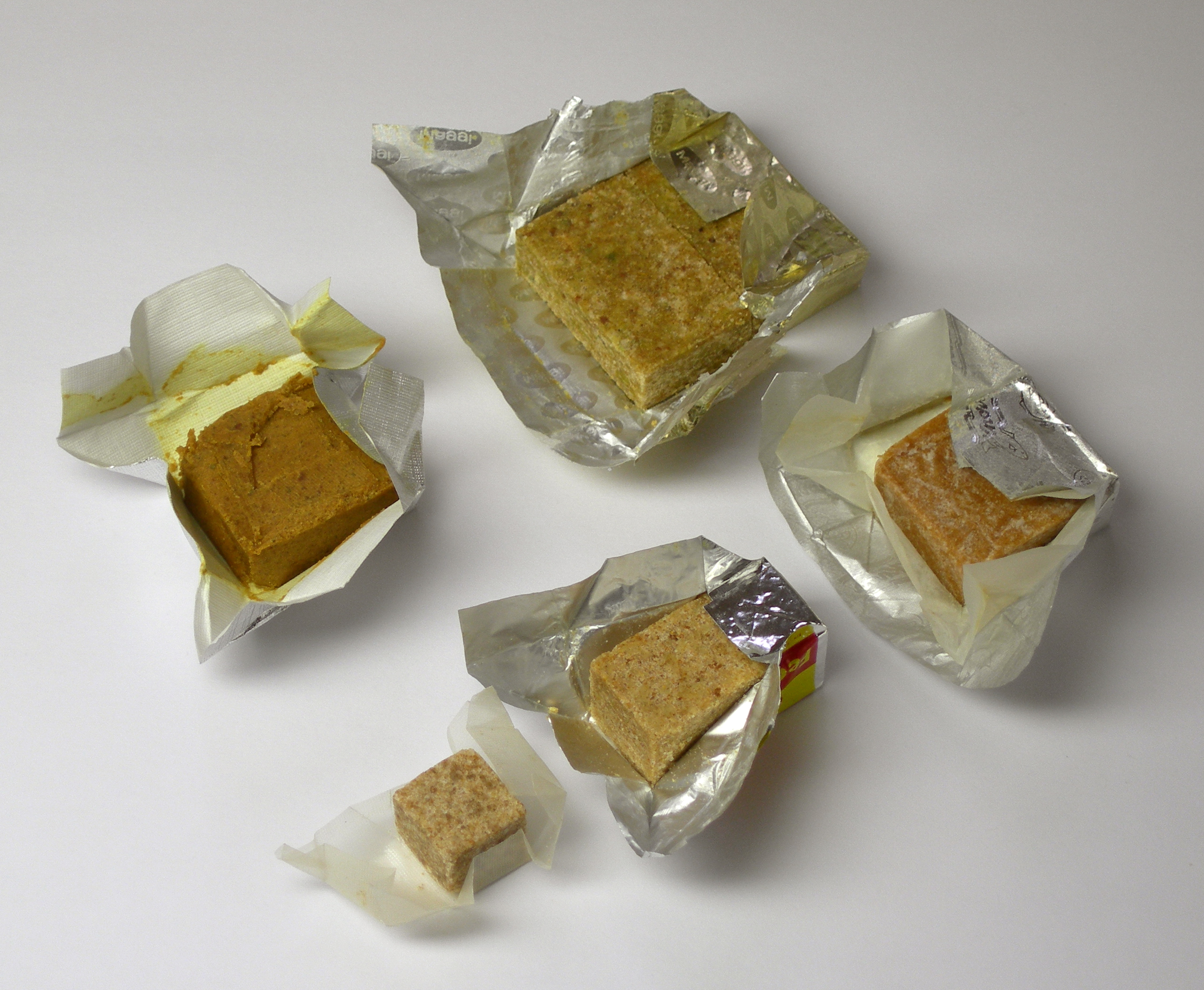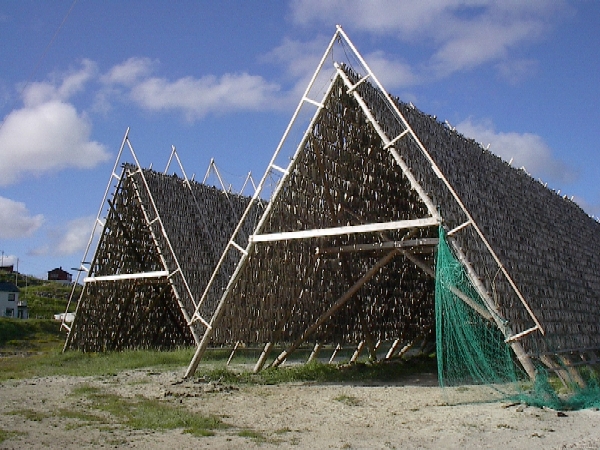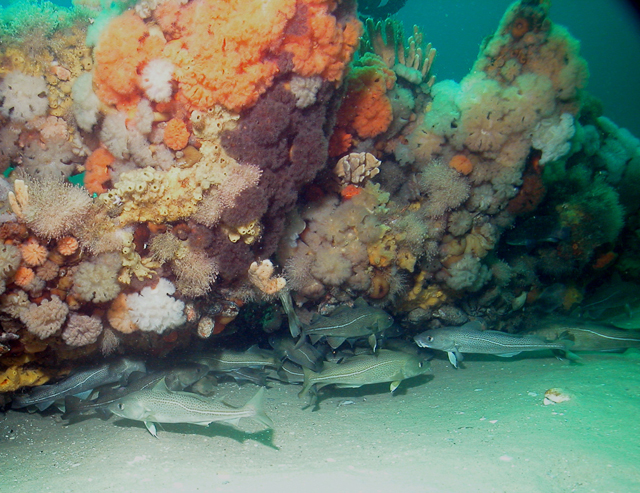|
Boknafisk
Boknafisk (either from saami ''boahkkeguolli'' or Norwegian ''bokna'' "half dry") is a variant of stockfish and is unsalted fish partially dried by sun and wind on drying flakes ('hjell') or on a wall. The most common fish used for boknafisk is cod, but other types of fish can also be used. If herring is used, the dish is called ''bokna sild''. Boknafisk is mostly associated with Northern Norway, but it is eaten along the entire Norwegian coast down to Bergen. See also * List of dried foods This is a list of dried foods. Food drying is a method of food preservation that works by removing water from the food, which inhibits the growth of bacteria and has been practiced worldwide since ancient times to preserve food. Where or when d ... Norwegian cuisine Dried fish Fish dishes {{Norway-cuisine-stub ... [...More Info...] [...Related Items...] OR: [Wikipedia] [Google] [Baidu] |
List Of Dried Foods
This is a list of dried foods. Food drying is a method of food preservation that works by removing water from the food, which inhibits the growth of bacteria and has been practiced worldwide since ancient times to preserve food. Where or when dehydration as a food preservation technique was invented has been lost to time, but the earliest known practice of food drying is 12,000 BC by inhabitants of the modern Middle East and Asia."Historical Origins of Food Preservation". Accessed June 2011. Dried foods Processed foods B  ...
...
[...More Info...] [...Related Items...] OR: [Wikipedia] [Google] [Baidu] |
Nord-Norge
Northern Norway ( nb, Nord-Norge, , nn, Nord-Noreg; se, Davvi-Norga) is a geographical Regions of Norway, region of Norway, consisting of the two northernmost counties Nordland and Troms og Finnmark, in total about 35% of the Norwegian mainland. Some of the largest towns in Northern Norway (from south to north) are Mo i Rana, Bodø, Narvik, Harstad, Tromsø and Alta, Norway, Alta. Northern Norway is often described as the land of the midnight sun and the land of the Aurora (astronomy), northern lights. Further north, halfway to the North Pole, is the Arctic archipelago of Svalbard, traditionally not regarded as part of Northern Norway. The region is multi-cultural, housing not just Norwegians but also the indigenous peoples, indigenous Sami people, Norwegian Finns (known as Kven people, Kvens, distinct from the "Forest Finns" of Southern Norway) and Russians, Russian populations (mostly in Kirkenes). The Norwegian language dominates in most of the area; Sami speakers are mainly ... [...More Info...] [...Related Items...] OR: [Wikipedia] [Google] [Baidu] |
Stockfish
Stockfish is unsalted fish, especially cod, dried by cold air and wind on wooden racks (which are called "hjell" in Norway) on the foreshore. The drying of food is the world's oldest known preservation method, and dried fish has a storage life of several years. The method is cheap and effective in suitable climates; the work can be done by the fisherman and family, and the resulting product is easily transported to market. Over the centuries, several variants of dried fish have evolved. The ''stockfish'' (fresh dried, not salted) category is often mistaken for the ''clipfish'', or salted cod, category where the fish is salted before drying. Salting was not economically feasible until the 17th century, when cheap salt from southern Europe became available to the maritime nations of northern Europe. Stockfish is cured in a process called fermentation where cold-adapted bacteria matures the fish, similar to the maturing process of cheese. In English legal records of the Medi ... [...More Info...] [...Related Items...] OR: [Wikipedia] [Google] [Baidu] |
Dried Fish
Fresh fish rapidly deteriorates unless some way can be found to preserve it. Drying (food), Drying is a method of food preservation that works by removing water from the food, which inhibits the growth of microorganisms. Open air drying using sun and wind has been practiced since ancient times to preserve food."Historical Origins of Food Preservation." Accessed June 2011. Water is usually removed by evaporation (air drying, sun drying, smoking or wind drying) but, in the case of freeze-drying, food is first frozen food, frozen and then the water is removed by sublimation (chemistry), sublimation. Bacteria, yeasts and molds need the water in the food to grow, and drying effectively prevents them from surviving in the food. Fish are Food preservation, preserved through such traditio ... [...More Info...] [...Related Items...] OR: [Wikipedia] [Google] [Baidu] |
Sami Languages
Acronyms * SAMI, ''Synchronized Accessible Media Interchange'', a closed-captioning format developed by Microsoft * Saudi Arabian Military Industries, a government-owned defence company * South African Malaria Initiative, a virtual expertise network of malaria researchers People * Samee, also spelled Sami, a male given name * Sami (name), including lists of people with the given name or surname * Sámi people, indigenous people of the Scandinavian Peninsula, the Kola Peninsula, Karelia and Finland ** Sámi cuisine ** Sámi languages, of the Sami people ** Sámi shamanism, a faith of the Sami people Places * Sápmi, a cultural region in Northern Europe * Sami (ancient city), in Elis, Greece * Sami Bay, east of Sami, Cephalonia * Sami District, Gambia * Sami, Burkina Faso, a district of the Banwa Province * Sami, Cephalonia, a municipality in Greece * Sami, Gujarat, a town in Patan district of Gujarat, India * Sami, Paletwa, a town in Chin State, Myanmar * Sämi, a village in L� ... [...More Info...] [...Related Items...] OR: [Wikipedia] [Google] [Baidu] |
Norwegian Language
Norwegian ( no, norsk, links=no ) is a North Germanic language spoken mainly in Norway, where it is an official language. Along with Swedish and Danish, Norwegian forms a dialect continuum of more or less mutually intelligible local and regional varieties; some Norwegian and Swedish dialects, in particular, are very close. These Scandinavian languages, together with Faroese and Icelandic as well as some extinct languages, constitute the North Germanic languages. Faroese and Icelandic are not mutually intelligible with Norwegian in their spoken form because continental Scandinavian has diverged from them. While the two Germanic languages with the greatest numbers of speakers, English and German, have close similarities with Norwegian, neither is mutually intelligible with it. Norwegian is a descendant of Old Norse, the common language of the Germanic peoples living in Scandinavia during the Viking Age. Today there are two official forms of ''written'' Norwegian, (literally ... [...More Info...] [...Related Items...] OR: [Wikipedia] [Google] [Baidu] |
Atlantic Cod
The Atlantic cod (''Gadus morhua'') is a benthopelagic fish of the family Gadidae, widely consumed by humans. It is also commercially known as cod or codling.''Atlantic Cod'' . Seafood Portal. Dry cod may be prepared as unsalted stockfish,''Oxford English Dictionary'', 3rd ed. "milwell, ''n.''" Oxford University Press (Oxford), 2002.''Oxford English Dictionary'', 1st ed. "stock-fish , 'stockfish, ''n.''" Oxford University Press (Oxford), 1917. and as cured |
Atlantic Herring
Atlantic herring (''Clupea harengus'') is a herring in the family (biology), family Clupeidae. It is one of the most abundant fish species in the world. Atlantic herrings can be found on both sides of the Atlantic Ocean, congregating in large Shoaling and schooling, schools. They can grow up to in length and weigh up to . They feed on copepods, krill and small fish, while their natural predators are pinniped, seals, whales, cod and other larger fish. The Atlantic herring fishery has long been an important part of the economy of New England and the Canada, Canadian Atlantic provinces. This is because the fish congregate relatively near to the coast in massive schools, notably in the cold waters of the semi-enclosed Gulf of Maine and Gulf of Saint Lawrence, Gulf of St. Lawrence. North Atlantic herring schools have been measured up to in size, containing an estimated 4 billion fish. Description Atlantic herring have a wikt:fusiform, fusiform body. Gill rakers in their mouths fi ... [...More Info...] [...Related Items...] OR: [Wikipedia] [Google] [Baidu] |
Bergen
Bergen (), historically Bjørgvin, is a city and municipality in Vestland county on the west coast of Norway. , its population is roughly 285,900. Bergen is the second-largest city in Norway. The municipality covers and is on the peninsula of Bergenshalvøyen. The city centre and northern neighbourhoods are on Byfjorden, 'the city fjord', and the city is surrounded by mountains; Bergen is known as the "city of seven mountains". Many of the extra-municipal suburbs are on islands. Bergen is the administrative centre of Vestland county. The city consists of eight boroughs: Arna, Bergenhus, Fana, Fyllingsdalen, Laksevåg, Ytrebygda, Årstad, and Åsane. Trading in Bergen may have started as early as the 1020s. According to tradition, the city was founded in 1070 by King Olav Kyrre and was named Bjørgvin, 'the green meadow among the mountains'. It served as Norway's capital in the 13th century, and from the end of the 13th century became a bureau city of the Hanseatic Leag ... [...More Info...] [...Related Items...] OR: [Wikipedia] [Google] [Baidu] |
Norwegian Cuisine
Norwegian cuisine in its traditional form is based largely on the raw materials readily available in Norway and its mountains, wilderness, and coast. It differs in many respects from continental cuisine through the stronger focus on game and fish. Many of the traditional dishes are the result of using conserved materials, necessary because of the long winters. Modern Norwegian cuisine, although still strongly influenced by its traditional background, has been influenced by globalization: pasta, pizza, tacos, and the like are as common as meatballs and cod as staple foods. Typical main meals Most Norwegians eat three or four regular meals a day, usually consisting of a cold breakfast with coffee, a cold (usually packed) lunch at work and a hot dinner at home with the family. Depending on the timing of family dinner (and personal habit), some may add a cold meal in the late evening, typically a simple sandwich. Breakfast (''frokost'') The basic Norwegian breakfast consists of br ... [...More Info...] [...Related Items...] OR: [Wikipedia] [Google] [Baidu] |






